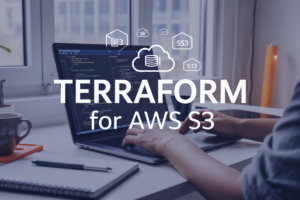AWS load balancers can make or break your application’s performance, but choosing between ALB, NLB, and CLB doesn’t have to be complicated. This guide is designed for cloud engineers, developers, and DevOps professionals who need to understand AWS load balancer types and make smart decisions for their infrastructure.
You’ll discover the key differences in our AWS load balancer comparison, learn when each elastic load balancing AWS option works best, and get practical insights into load balancer pricing AWS considerations. We’ll break down the application load balancer vs network load balancer debate, show you exactly how ALB vs NLB vs CLB stack up in real scenarios, and give you a clear decision framework you can actually use.
By the end, you’ll know which AWS load balancer fits your specific use case and how to optimize costs without sacrificing performance.
AWS Load Balancer Fundamentals You Need to Know
What Load Balancers Do for Your Applications
AWS load balancers act as traffic directors, sitting between your users and backend servers to distribute incoming requests across multiple targets. They monitor server health, automatically route traffic away from failed instances, and ensure your applications remain available even when individual servers go down. This distribution prevents any single server from becoming overwhelmed while maintaining consistent response times for users.
Why AWS Offers Multiple Load Balancer Types
Different applications have unique requirements that can’t be solved with a one-size-fits-all approach. Web applications need advanced routing based on URLs and headers, while gaming or IoT applications require ultra-low latency at the network level. AWS created three distinct load balancer types – ALB, NLB, and CLB – to address these varying needs, from simple traffic distribution to complex application-aware routing scenarios.
Key Benefits of Using AWS Load Balancers
Elastic Load Balancing AWS provides automatic scaling that adjusts to traffic patterns without manual intervention. You get built-in security features, SSL termination, and seamless integration with other AWS services like Auto Scaling Groups and CloudWatch. The managed service eliminates infrastructure overhead while providing high availability across multiple Availability Zones, reducing operational complexity and improving application reliability.
Application Load Balancer (ALB) Deep Dive
Perfect Use Cases for Layer 7 Routing
Application Load Balancer excels when you need intelligent traffic distribution based on HTTP/HTTPS content. Web applications with microservices architectures benefit most from ALB’s ability to route requests to different services based on URL paths, headers, or query parameters. E-commerce platforms can direct product searches to catalog services while sending payment requests to secure payment processors. Content delivery scenarios where different media types require specialized backend servers also showcase ALB’s strengths perfectly.
Advanced Features That Set ALB Apart
ALB stands out with sophisticated routing algorithms and health checking capabilities that go beyond basic load distribution. WebSocket support enables real-time applications like chat systems and live dashboards to maintain persistent connections. HTTP/2 protocol support improves performance for modern web applications. The load balancer automatically handles SSL termination and provides detailed CloudWatch metrics for monitoring application performance. Request tracing and access logging give developers deep insights into traffic patterns and user behavior.
Content-Based Routing Capabilities
Smart routing rules make ALB powerful for complex application architectures. Host-based routing directs traffic from multiple domains to appropriate target groups, perfect for serving different brands from one infrastructure. Path-based routing sends API calls to microservices while routing static content to CDN origins. Header-based routing enables A/B testing by directing users to different application versions. Query string routing allows feature flagging and gradual rollouts without code changes.
Integration with AWS Services
ALB integrates seamlessly with the broader AWS ecosystem for enhanced functionality and management. Auto Scaling groups automatically register new instances as targets during scale-out events. AWS Certificate Manager provides free SSL certificates with automatic renewal. Amazon ECS and EKS services register containers dynamically as they start and stop. Lambda functions can serve as targets for serverless architectures. AWS WAF protects applications from common web exploits and attacks directly at the load balancer level.
Network Load Balancer (NLB) Complete Guide
When Ultra-High Performance Matters
Network Load Balancer (NLB) shines when your applications demand extreme performance and minimal latency. This powerhouse handles millions of requests per second while maintaining microsecond-level latency, making it perfect for gaming applications, real-time trading platforms, and IoT workloads. Unlike other AWS load balancer types, NLB operates at the connection level, preserving source IP addresses and providing the raw speed that latency-sensitive applications desperately need.
Layer 4 Load Balancing Advantages
Operating at the transport layer gives NLB unique capabilities that set it apart in AWS load balancer comparison scenarios. Layer 4 load balancing means NLB makes routing decisions based on IP addresses and port numbers without inspecting packet contents. This approach delivers lightning-fast performance since there’s no deep packet inspection overhead. The network load balancer AWS service excels at handling sudden traffic spikes and maintaining consistent performance even under extreme loads, making it ideal for applications where every millisecond counts.
Static IP and Elastic IP Support
NLB provides static IP addresses for each Availability Zone, solving a common networking challenge that other load balancers can’t address. You can also assign Elastic IP addresses to your NLB, giving you predictable, whitelist-friendly IP addresses that remain constant even during scaling events. This feature proves invaluable when integrating with third-party services, firewall rules, or DNS configurations that require fixed IP addresses. The static IP capability makes NLB the go-to choice for enterprise environments with strict networking requirements and IP-based access controls.
Classic Load Balancer (CLB) Overview
Legacy Applications and Backward Compatibility
Classic Load Balancer (CLB) serves as the original AWS load balancer, designed specifically for applications built on the EC2-Classic platform. Many organizations still rely on CLB for older applications that haven’t migrated to modern VPC architectures. CLB supports both Layer 4 and Layer 7 load balancing, making it compatible with legacy systems that require basic HTTP/HTTPS and TCP traffic distribution without advanced routing capabilities.
Basic Load Balancing for Simple Needs
CLB provides straightforward load balancing functionality perfect for simple applications with minimal requirements. It distributes incoming traffic across multiple EC2 instances using round-robin algorithms and basic health checks. The setup process is remarkably simple – you configure listeners for HTTP, HTTPS, or TCP protocols and attach your instances. CLB handles SSL termination and provides basic sticky sessions, making it suitable for traditional web applications that don’t need sophisticated routing rules or advanced features like host-based or path-based routing.
Cost Considerations for Older Workloads
While CLB appears cost-effective initially, the pricing structure can become expensive for high-traffic applications. You pay hourly rates plus data processing charges, which can accumulate significantly compared to modern alternatives. CLB lacks the granular pricing benefits of ALB and NLB, especially for applications with varying traffic patterns. For legacy workloads with predictable, moderate traffic, CLB remains economically viable. However, organizations should evaluate long-term costs against migration expenses when planning infrastructure budgets.
Migration Path to Modern Load Balancers
Migrating from CLB to ALB or NLB requires careful planning but offers substantial benefits. Start by analyzing your application’s traffic patterns and requirements – web applications typically benefit from ALB’s advanced routing, while high-performance applications need NLB’s ultra-low latency. AWS provides migration tools and documentation to help transition smoothly. The process involves creating new load balancers, updating DNS records, and gradually shifting traffic. Most organizations see improved performance, better cost efficiency, and access to modern features like WebSocket support and advanced health checks after migration.
Performance and Scalability Comparison
Throughput Capabilities Across Load Balancer Types
Network Load Balancer delivers the highest throughput among AWS load balancer types, handling millions of requests per second with ultra-low latency at the transport layer. Application Load Balancer excels at HTTP/HTTPS traffic management, processing hundreds of thousands of requests while offering advanced routing features. Classic Load Balancer provides basic load distribution across EC2 instances but shows performance limitations compared to newer ALB and NLB options for high-traffic applications.
Latency Impact on Application Performance
Connection Processing Speed
- Network Load Balancer operates at Layer 4, achieving sub-millisecond latency by forwarding traffic without deep packet inspection
- Application Load Balancer adds slight latency overhead due to Layer 7 processing but enables content-based routing and SSL termination
- Classic Load Balancer introduces higher latency through its older architecture and limited optimization features
Geographic Distribution Effects
- Cross-zone load balancing impacts latency differently across load balancer types
- NLB maintains consistent performance regardless of availability zone distribution
- ALB shows minimal latency variation when properly configured with target groups
Auto Scaling Integration Benefits
AWS load balancers seamlessly integrate with Auto Scaling groups to dynamically adjust capacity based on demand. Application Load Balancer provides granular health checks that trigger scaling events more precisely than CLB’s basic monitoring. Network Load Balancer supports rapid instance registration and deregistration, making it ideal for containerized applications using ECS or EKS. All three load balancer types automatically distribute traffic to newly launched instances while removing unhealthy targets from rotation, ensuring consistent application availability during scaling operations.
Pricing Models and Cost Optimization
Understanding AWS Load Balancer Pricing Structure
AWS load balancer pricing varies significantly across ALB, NLB, and CLB models. Application Load Balancers charge per hour plus per Load Balancer Capacity Unit (LCU), while Network Load Balancers use similar hourly rates with Network LCU pricing. Classic Load Balancers follow a simpler hourly rate plus data processing fees. Each LCU represents a combination of new connections, active connections, bandwidth, and rule evaluations, making cost prediction complex for high-traffic applications.
Cost-Effective Strategies for Each Load Balancer Type
Optimize ALB costs by consolidating multiple services behind fewer load balancers using path-based routing and host-based rules. For NLB, right-size your capacity since you pay for provisioned bandwidth even when unused. CLB users should migrate to ALB or NLB for better cost efficiency and modern features. Enable connection draining and implement health checks strategically to reduce unnecessary processing costs across all load balancer types.
Hidden Costs to Avoid
Cross-AZ data transfer charges accumulate quickly when load balancers distribute traffic across availability zones. Idle load balancers still incur hourly charges, so delete unused instances immediately. Over-provisioning target groups leads to unnecessary health check costs. Monitor CloudWatch metrics regularly to identify underutilized resources. Regional data processing fees apply to all traffic, making geographic optimization crucial for cost control in multi-region deployments.
Security Features and Best Practices
SSL/TLS Termination Capabilities
Each AWS load balancer type offers different SSL/TLS termination options. Application Load Balancer provides the most flexible SSL termination, supporting SNI (Server Name Indication) for multiple certificates on a single listener. Network Load Balancer handles SSL termination at Layer 4 with lower latency, while also supporting SSL passthrough to backend servers. Classic Load Balancer offers basic SSL termination but lacks advanced features like SNI support. All three integrate seamlessly with AWS Certificate Manager for automated certificate provisioning and renewal.
Web Application Firewall Integration
ALB stands out with native AWS WAF integration, enabling real-time protection against common web exploits like SQL injection and cross-site scripting. You can create custom rules to filter traffic based on IP addresses, HTTP headers, or request patterns. Network Load Balancer doesn’t support direct WAF integration due to its Layer 4 operation, requiring alternative security measures. Classic Load Balancer also lacks WAF integration. For web applications requiring comprehensive threat protection, ALB with AWS WAF provides the strongest security posture among the three load balancer options.
Access Control and Authentication Options
Application Load Balancer excels in access control with built-in authentication support for OIDC and SAML providers like Amazon Cognito, Active Directory, and social identity providers. This eliminates the need for custom authentication logic in your applications. ALB also supports fine-grained routing based on user attributes and group membership. Network Load Balancer operates at the transport layer and doesn’t provide authentication features, relying on backend servers for access control. Classic Load Balancer similarly lacks native authentication capabilities, making ALB the clear choice for applications requiring centralized user management.
Security Group Configuration Guidelines
Proper security group configuration varies across load balancer types. For ALB, configure inbound rules for HTTP (port 80) and HTTPS (port 443) from your desired source ranges, typically 0.0.0.0/0 for public applications. Backend instances should only accept traffic from the load balancer’s security group. NLB requires similar configuration but may include additional ports based on your application needs. Remember that NLB preserves client IP addresses, affecting security group rules for target instances. Always follow the principle of least privilege, opening only necessary ports and restricting source IP ranges when possible for enhanced security.
Real-World Decision Framework
Choosing Based on Application Architecture
Your application’s design directly shapes your AWS load balancer choice. Web applications with HTTP/HTTPS traffic and complex routing needs work best with Application Load Balancer (ALB), especially when you need path-based or host-based routing. Microservices architectures benefit from ALB’s advanced features like weighted routing for blue-green deployments. TCP-based applications, gaming servers, or IoT workloads requiring ultra-low latency should use Network Load Balancer (NLB) for its superior performance. Legacy applications already running on Classic Load Balancer (CLB) can continue operating, but migrating to ALB typically provides better functionality and cost efficiency.
Traffic Patterns That Drive Load Balancer Selection
Traffic characteristics determine the optimal AWS load balancer type for your workload. High-volume, steady traffic with millions of requests benefits from NLB’s ability to handle extreme scale without performance degradation. Variable web traffic with SSL termination requirements works perfectly with ALB’s layer 7 processing capabilities. Sudden traffic spikes from social media or marketing campaigns need ALB’s quick scaling and intelligent routing. Real-time applications like online gaming or financial trading platforms require NLB’s consistent sub-millisecond latency. Batch processing workloads with predictable patterns can use any load balancer, but ALB offers better monitoring and troubleshooting capabilities.
Common Migration Scenarios
Most organizations start with CLB and migrate to modern load balancers for enhanced features. The typical CLB to ALB migration happens when teams need advanced routing, better SSL certificate management, or WebSocket support. E-commerce sites often migrate from ALB to NLB during peak seasons to handle traffic surges more efficiently. Multi-tier applications frequently use both ALB for web traffic and NLB for database connections. Container-based applications moving to ECS or EKS almost always choose ALB for its native integration. Companies expanding globally migrate to ALB for its superior health checking and cross-zone load balancing capabilities.
AWS offers three distinct load balancer types, each designed for specific use cases and traffic patterns. Application Load Balancers excel at handling HTTP/HTTPS traffic with advanced routing capabilities, making them perfect for modern web applications and microservices. Network Load Balancers deliver ultra-low latency and high throughput for TCP/UDP traffic, ideal for gaming applications and real-time systems. Classic Load Balancers, while legacy options, still serve basic load balancing needs for simple applications.
Your choice between ALB, NLB, and CLB should align with your application’s specific requirements, traffic patterns, and budget constraints. Consider ALB for feature-rich web applications, NLB for performance-critical workloads, and CLB only for legacy systems that can’t migrate. Start by evaluating your current traffic patterns, then test different configurations in a staging environment before making the switch. Remember that the right load balancer choice can significantly impact both your application’s performance and your AWS bill, so take time to analyze your needs carefully.




















